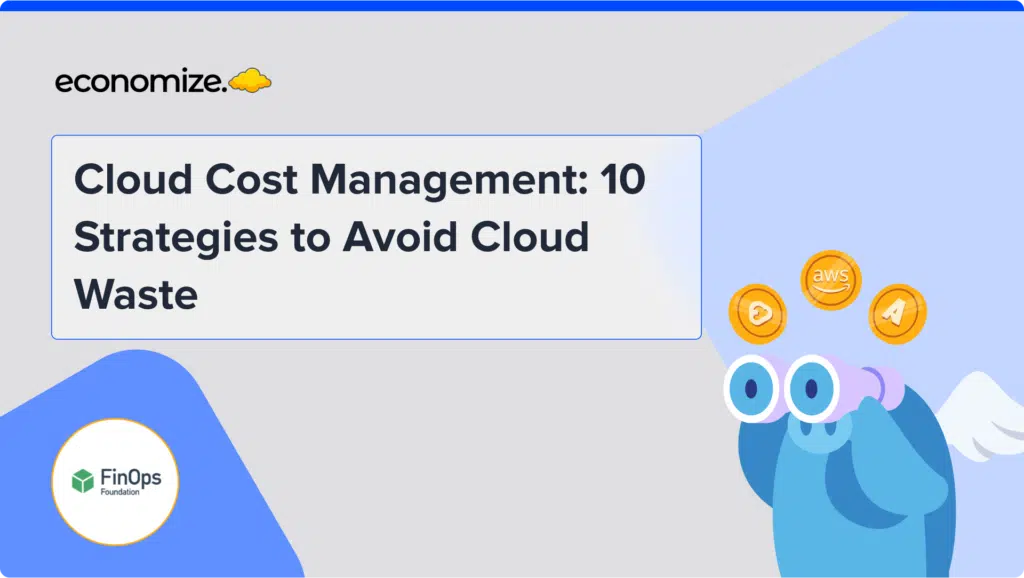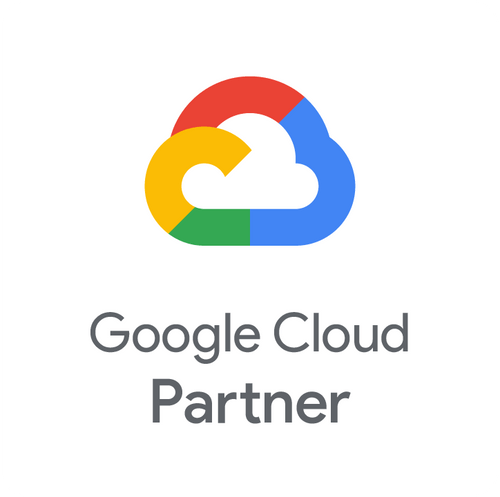FinOps has emerged as a critical discipline that enables organizations to optimize their cloud spending and align it with their business objectives. As more and more enterprises migrate their workloads to the cloud, the need for effective cost management and optimization becomes increasingly important.
One of the essential practices in FinOps is performance benchmarking, which helps organizations identify areas for improvement, establish industry standards, and promote transparency and collaboration across teams.
This article aims to provide an in-depth understanding of the importance of performance benchmarking in FinOps and demonstrate how it can be effectively implemented to drive cost optimization and efficiency. We will delve into the role of benchmarking, explore key performance indicators (KPIs) that should be considered, discuss the steps to implement benchmarking in your FinOps practice, and introduce some popular tools and resources to aid your FinOps journey.
The Role of Performance Benchmarking in FinOps
Performance benchmarking is a powerful tool that enables organizations to measure their cloud operations’ effectiveness and efficiency in comparison to industry standards or competitors. It is a continuous process that helps businesses identify opportunities for improvement and drive better decision-making.
Identifying Areas for Improvement and Comparing Performance
One of the primary objectives of benchmarking in FinOps is to identify areas for improvement in your organization’s cloud spending and performance. By comparing your organization’s performance metrics against industry standards, you can gain valuable insights into where you are falling short and where improvements can be made. Benchmarking allows you to:
- Highlight inefficiencies: Comparing your cloud infrastructure and cost management strategies against those of your competitors can help you spot inefficiencies and areas where you might be overspending.
- Uncover best practices: Analyzing the performance of industry leaders can provide you with an understanding of the best practices & strategies in cloud cost management and optimization, which can be adopted in your organization.
- Set realistic goals: Benchmarking helps you establish achievable performance targets for your cloud operations, based on industry standards and the performance of your competitors.
- Maturity Assessments can be conducting by measuring the effectiveness of your FinOps Domains and Capabilities.
Promoting Transparency and Collaboration Across Teams
Another key benefit of performance benchmarking in FinOps is its ability to promote transparency and collaboration across teams within an organization. When performance metrics and benchmarks are shared openly, it fosters a culture of accountability and encourages teams to work together towards common goals. Benchmarking can:
- Break down silos: By sharing benchmarking data and insights, teams can gain a better understanding of each other’s challenges and work together to address them. This collaborative approach can help break down silos and create a more cohesive organization.
- Drive continuous improvement: When teams are aware of their performance in comparison to industry standards, it motivates them to continually improve their processes and strategies, leading to better overall performance.
- Align priorities: Benchmarking helps teams align their priorities with the organization’s overall goals and objectives, ensuring that everyone is working towards the same targets.
- Another well-established practice is to follow along the 6 FinOps Principles that provide organizations with an alignment of financial sustainability and team accountability.
- An upcoming concept, Augmented FinOps automates financial governance, budgeting, and cost optimization through AI and ML practices.
FinOps Key Performance Indicators (KPIs) for Monitoring and Cost Optimization
FinOps KPIs are essential metrics that help organizations effectively monitor and optimize their cloud resources. By setting measurable benchmarks, FinOps KPIs enable organizations to gain visibility into their cloud usage, control costs, and make informed decisions based on data-driven insights.
These indicators cover various aspects of cloud management, including visibility, optimization, governance, and automation.
There are three main types of FinOps KPIs:
- Cloud Visibility KPIs: These KPIs focus on providing insights into the organization’s cloud environment, helping to ensure proper resource allocation and cost management. Examples include the (percentage of the environment with proper tagging in place) and the (percentage of bill from untagged resources).
- Cloud Optimization KPIs: These KPIs aim to identify areas for cost savings and operational improvements by monitoring resource utilization, security, and compliance risks. Examples include (rightsizing savings percentage) and (effective cost per resource).
- Cloud Governance and Automation KPIs: These KPIs emphasize adherence to best practices and policy compliance, as well as the effectiveness of automation efforts in reducing manual intervention. Examples include the (percent of policies in a compliant state) and (cost optimized over time).
For more information about FinOps KPIs and how to set them, users can view our FinOps KPIs Guide
FinOps KPIs for Benchmarking
FinOps KPIs for benchmarking differ from those focused on cost monitoring and optimization. These KPIs are designed to evaluate whether an organization’s cloud usage and spending align with their strategic and organizational objectives.
The FinOps Foundation has extensive documentation and resources covering various domains related to FinOps capabilities, such as Resource Utilization & Efficiency, Measuring Unit Costs, Managing Commitment-Based Discounts, Managing Anomalies, Forecasting, and Budget Management.
In this section, we will focus on the Measuring Unit Costs domain, which is essential for performance benchmarking. This domain helps organizations develop metrics that reveal the business value of their cloud spend. By calculating cloud spend per unit, such as cost per customer or cost per transaction, organizations can ensure that their cloud spending is proportional to their overall business growth.
FinOps Foundation Maturity Assessment
The FinOps Foundation’s maturity assessment indicates that organizations operating at various levels of maturity incorporate measuring unit costs differently. The assessment breaks down the maturity into three stages: Crawl, Walk, and Run.
- Crawl: In this stage, organizations focus on cloud-only cost-per-customer metrics. This approach may involve direct and shared cloud costs, depending on the complexity of the application.
- Walk: At this stage, organizations include Cloud, Software-as-a-Service (SaaS), and license-based cost-per-customer metrics. This could involve tools like Datadog, ServiceNow, or PagerDuty, or Bring Your Own License (BYOL) solutions like Windows or SQL Server running on cloud infrastructure.
- Run: Advanced teams consider a comprehensive range of costs, including Cloud, SaaS, Hybrid Costs, and Human Capital-based cost-per-customer. This stage typically involves collecting multiple metrics for different parts of a complex system, becoming more granular over time.
It is crucial to collaborate with all relevant organizational stakeholders to determine what drives business value when defining the right KPIs. Once you’ve decided what to measure, you must clearly delineate the financial inputs that make up your unit costs, including discounts, negotiated rates, optimizations, shared costs, support, and other operational related costs.
For more details about FinOps Benchmarking KPIs, users can visit Measuring Unit Costs by FinOps Foundation
How to Measure Cloud Cost Efficiency
Performance benchmarking in FinOps helps organizations evaluate their cloud spend efficiency and compare their performance against industry standards or competitors. To successfully implement performance benchmarking in your FinOps practice, follow these steps:
- Goal Setting: Begin by defining your performance benchmarking objectives. Identify the specific areas where you want to improve efficiency or gain a competitive advantage. Determine the relevant KPIs and metrics that will help you measure progress towards these goals.
- Data Collection: Gather the necessary data to establish a baseline for your organization’s current performance. This may include historical cloud usage and spend data, operational metrics, and any other relevant information that contributes to your chosen KPIs.
- Selecting Relevant Benchmarks: Choose appropriate benchmarks that are relevant to your industry, organization size, and specific goals. These benchmarks may be based on industry standards, best practices, or the performance of direct competitors. Ensure that the benchmarks are suitable for comparison and can provide meaningful insights for improvement.
- Establishing a Baseline: Analyze the collected data to create a baseline for your organization’s current performance. This baseline will serve as a starting point for comparison and help you track progress over time. Ensure that the baseline is accurate and representative of your organization’s typical performance.
- Benchmark Analysis: Compare your organization’s performance against the selected benchmarks. Identify areas where your organization excels and areas that require improvement. Look for patterns or trends in the data to better understand the underlying factors affecting your cloud spend efficiency.
- Develop Improvement Strategies: Based on the benchmark analysis, create targeted strategies to improve your organization’s performance. This may involve optimizing resource utilization, reducing waste, or re-allocating resources to focus on high-priority initiatives. Ensure that the strategies align with your organizational objectives and have clear, measurable goals.
- Implement and Monitor: Implement the improvement strategies and monitor their impact on your organization’s performance. Regularly track progress against the established baseline and make adjustments as necessary. Continuously refine your strategies to achieve better efficiency and maintain a competitive edge.
- Iterate and Refine: Performance benchmarking is an ongoing process. As your organization evolves and the industry landscape changes, revisit your goals, benchmarks, and strategies. Update your baseline and benchmarks as needed to ensure that you are continuously driving improvement and staying competitive in the market.
By following these steps, you can effectively implement performance benchmarking in your FinOps practice, allowing you to optimize cloud resources, reduce costs, and better align your cloud spending with organizational objectives.
Tools and Resources for FinOps Benchmarking
Various resources are available to support organizations in their FinOps benchmarking journey. These tools can help collect data, track metrics, analyze performance, and provide insights for optimizing cloud spending. Here are some popular tools and resources for FinOps benchmarking:
- AWS Cost Explorer: AWS Cost Explorer is a native AWS tool that allows organizations to visualize, understand, and manage their AWS costs and usage. It offers insights into historical and projected spending patterns, enabling organizations to optimize their AWS resources effectively.
- Azure Cost Management and Billing: Azure Cost Management and Billing is a native Azure tool that provides cost analysis, budgeting, and resource optimization capabilities. It helps organizations monitor and control their Azure spending, ensuring efficient resource allocation and cost management.
- Google Cloud Cost Management: Google Cloud Cost Management is a set of native tools and features within the Google Cloud Platform that enables organizations to monitor, analyze, and optimize their cloud spending. It includes features like cost reporting, budgeting, and recommendations for resource optimization. GCP’s FinOps Hub allows you to assess your cost optimization efforts with industry benchmarks.
- FinOps Foundation: The FinOps Foundation is a non-profit organization that offers resources, best practices, and a community focused on cloud financial management. It provides extensive documentation, playbooks, and guidance to help organizations implement FinOps practices effectively.
- Economize: Economize is a cloud cost optimization platform that offers cost management, resource optimization, and performance benchmarking capabilities. It provides insights into cloud usage, assists in managing costs and resources, and enables organizations to make data-driven decisions. Economize supports multiple cloud providers such as AWS, Azure, and Google Cloud Platform. They offer a free trial and sandbox environment for users to explore the platform and its features.
By leveraging these tools and resources, organizations can effectively implement FinOps benchmarking practices, optimize cloud resource usage, and achieve cost efficiency while meeting their strategic and organizational objectives.
Conclusion
FinOps benchmarking plays a critical role in helping organizations optimize their cloud spending, drive efficiency, and align IT investments with their strategic objectives. By understanding the different types of FinOps KPIs, focusing on performance benchmarking, and implementing effective practices, organizations can successfully navigate the complexities of cloud financial management.
Organizations today use a multitude of cloud, AI, and SaaS services to keep their business operations running smoothly. However, managing these resources can become overwhelming, and organizations may find themselves overpaying for services or accumulating expenditure from underutilized resources. Opting for a leading cloud spend management tool can help keep your costs aligned with your business outcomes.
Economize offers an end-to-end FinOps solution that enables organizations to develop a cost optimization strategy to reduce their cloud, AI, and SaaS costs. With Economize, organizations can achieve their business objectives without breaking the bank on cloud and AI services.
Sign up for a free demo to start saving on your cloud services today.










